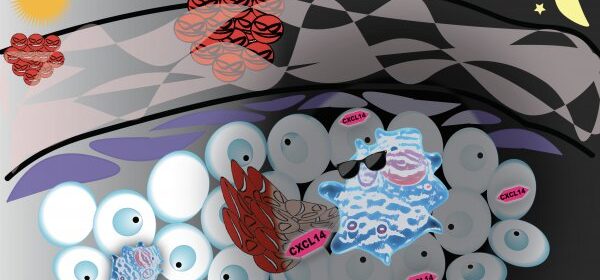Epidermal CXCL14 may play a protective role in skin inflammation in mice

Researchers at Kyoto University have discovered the skin’s natural protection from nighttime bacterial invasion in mice, which may provide a basis for eventually developing a drug treatment.
The team focused on Staphylococcus aureus, a common skin-resident pathogen, which grows actively during the daytime in the skin of mice deficient in chemokine CXCL14. Healthy mice usually showed low bacterial growth during the day when the expression of this signaling protein was higher.
“Our results revealed the very strong rhythmic presence of CXCL14—high in the daytime and low in nighttime—in mouse epidermis,” says Kyoto University’s Hitoshi Okamura.
The key findings of this study result from a collaboration between Kyoto University and the Tokyo Metropolitan Institute of Medical Science. This joint effort brought together the former’s focus on how the gene expression of CXCL14 switched in mouse skin tissue; the latter investigated the function of CXCL14.
“Among the chemokine family members, only CXCL14 is produced in epidermal cells in a circadian rhythm-dependent manner,” notes Okamura.
“The circadian-dependent role of CXCL14 is crucial as it transports important DNA into immune cells,” adds Takahiko Hara, the Tokyo Metropolitan Institute of Medical Science. This is akin to the timely delivery of strategic battle plans to an infantry platoon carrying out a defensive maneuver on invaders.
The results of this study may also suggest that disrupting the circadian rhythm might be linked to poor skin health.
“It may be possible to enhance the antimicrobial function at the initial stage of infection by increasing the expression of CXCL14,” adds the author.
Source: Read Full Article
